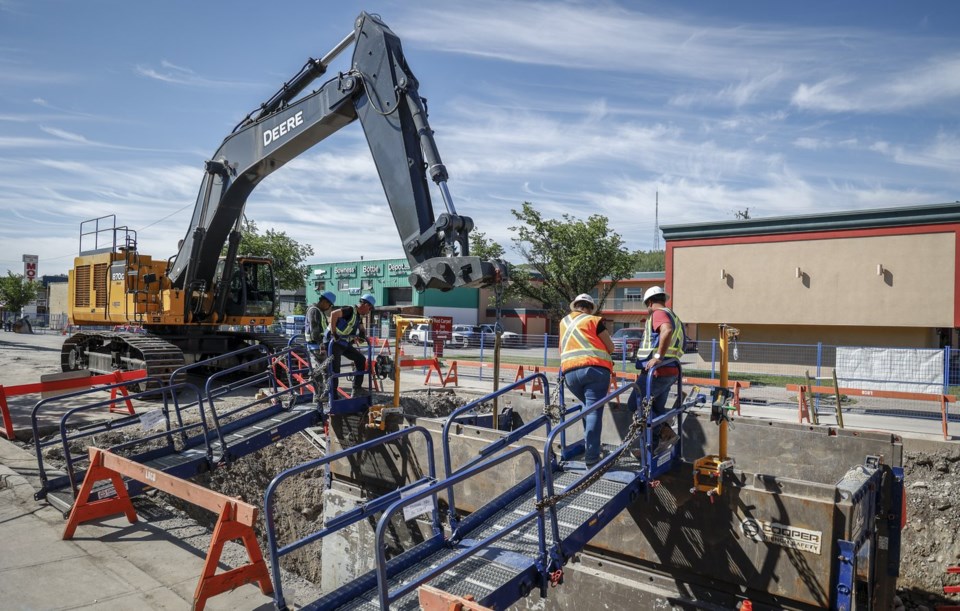CALGARY — As daily water use in Calgary remains above target during repairs to a major feeder main, a city official warns the effect on pumps and other infrastructure is like a car's engine running too hard for too long.
Calgary's director of climate and environment, Carolyn Bowen, said in a video update on the city's water situation Sunday that when water use is above the 485-million-litre-per-day target, preventative maintenance becomes challenging.
The city used 496 million litres of water on Saturday, and was above 500 million litres in the days before that.
The city says it's on track to complete repairs on the water main by September 23rd, but in the meantime, Calgarians are banned from using potable water outside, and are being asked to skip toilet flushes and hold off on laundry and dishes.
Bowen says over the past few days, there was a pump failure and a "malfunctioning component" in the water-treatment process, which she says highlights the risk of running the system above the target.
She says when water demand exceeds 500 million litres, maintenance switches from preventative to reactive.
"When we stay above 500 million litres, we're revving the engines at an unsustainable level over a prolonged period of time, and risk overheating the system," Bowen said.
Calgarians typically use about 600 million litres of water each day.
The Bearspaw South Feeder Main in northwest Calgary suddenly burst in early June, forcing a citywide clampdown on water use.
Restrictions had mostly been eased, when the city announced in early August that more trouble spots had been found along the more than 10-kilometre pipe, which would have to be dug up and reinforced.
Normally at this time of year, the city's Glenmore treatment plant supplies approximately 30 per cent of Calgary's water, but is supplying 70 per cent during the repair process, Bowen said.
She also said that supplying more than 500 million litres per day makes it more difficult to replenish underground reservoirs for neighbourhoods.
Last week, Caroline McDonald-Harker, a Mount Royal University sociologist, said there may be some fatigue settling in after a litany of more serious crises that have required sacrifice — from floods to fires to the COVID-19 pandemic.
More than two dozen tickets for people who've been caught violating the outdoor water ban have been issued, Bowen said. The city is also discussing ways to conserve water with major industries and other groups.
"Our focus is on maintaining voluntary conservation efforts to mitigate infrastructure risk and having to make any difficult decisions that have further impacts on Calgarians, businesses and city services," she said.
Bowen said the repairs are on schedule.
This report by The Canadian Press was first published Sept. 8, 2024.
The Canadian Press



